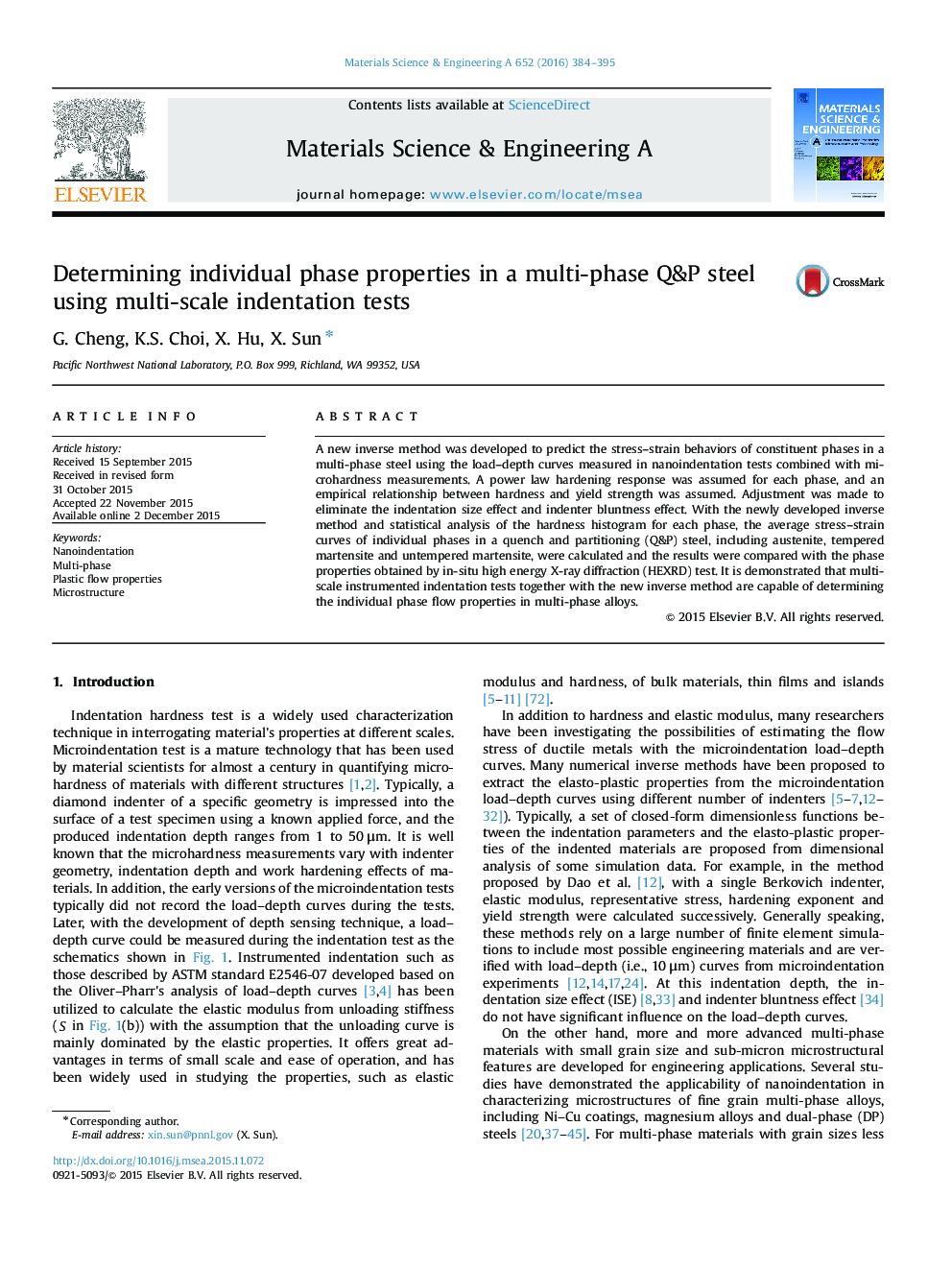| Article ID | Journal | Published Year | Pages | File Type |
|---|---|---|---|---|
| 1573839 | Materials Science and Engineering: A | 2016 | 12 Pages |
Abstract
A new inverse method was developed to predict the stress-strain behaviors of constituent phases in a multi-phase steel using the load-depth curves measured in nanoindentation tests combined with microhardness measurements. A power law hardening response was assumed for each phase, and an empirical relationship between hardness and yield strength was assumed. Adjustment was made to eliminate the indentation size effect and indenter bluntness effect. With the newly developed inverse method and statistical analysis of the hardness histogram for each phase, the average stress-strain curves of individual phases in a quench and partitioning (Q&P) steel, including austenite, tempered martensite and untempered martensite, were calculated and the results were compared with the phase properties obtained by in-situ high energy X-ray diffraction (HEXRD) test. It is demonstrated that multi-scale instrumented indentation tests together with the new inverse method are capable of determining the individual phase flow properties in multi-phase alloys.
Related Topics
Physical Sciences and Engineering
Materials Science
Materials Science (General)
Authors
G. Cheng, K.S. Choi, X. Hu, X. Sun,
